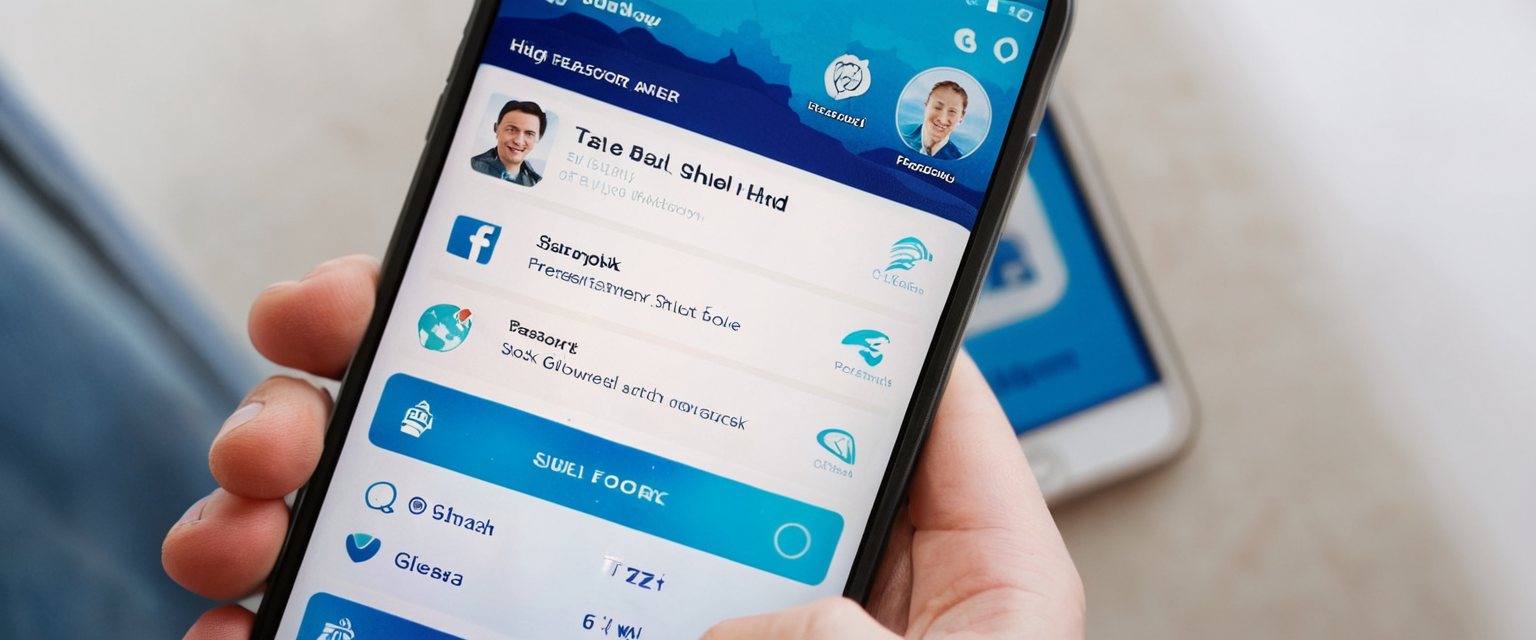
The travel and hospitality industry has become one of the most frequently targeted sectors for cyberattacks, with organizations handling extraordinarily sensitive personal information ranging from passport numbers and credit card details to loyalty program credentials and travel itineraries. Recent major breaches affecting airlines like Qantas, Vietnam Airlines, and numerous hotel chains have exposed millions of passenger and guest records, revealing a systemic vulnerability that extends far beyond traditional payment card data to encompass the full spectrum of personally identifiable information that travelers entrust to booking platforms. This comprehensive analysis examines the multifaceted challenges of protecting PII in travel bookings, encompassing the nature of data collected, emerging threat vectors, regulatory requirements, organizational safeguards, and proactive strategies that both individuals and companies must implement to detect and mitigate identity exposure in an increasingly digitized travel ecosystem.
Understanding Personally Identifiable Information in Travel Transactions
The travel booking process generates an unprecedented collection of sensitive personal data that extends well beyond what most travelers fully comprehend. When booking flights, hotels, rental cars, or vacation packages through online travel agencies, direct airline websites, or hotel chains, consumers provide information that fundamentally identifies them and creates multiple vectors for potential exploitation. Sensitive PII collected during travel transactions includes social security numbers, passport numbers and driver’s license numbers, complete bank account and credit card details, travel itineraries and frequent flyer numbers, dates of birth and nationality information, home addresses and phone numbers, and government-issued identification documents. The sensitivity of this information cannot be overstated, as it provides bad actors with virtually everything needed to commit identity theft, open fraudulent financial accounts, or engage in sophisticated social engineering attacks.
Beyond the obviously sensitive categories, the industry also collects what might initially appear to be less sensitive information that nonetheless poses substantial risks when aggregated. Non-sensitive PII such as full names without other identifiers, business contact information, job titles and company affiliations, and general demographic data individually seem innocuous and unlikely to cause serious harm if disclosed. However, the travel industry’s characteristic practice of data aggregation—combining booking information with loyalty program data, payment histories, travel patterns, location data, and preferences—transforms this seemingly benign information into a comprehensive profile that can enable identity impersonation, fraudulent bookings under someone else’s name, account takeovers, and highly personalized phishing attacks. A traveler’s email address combined with their frequent flyer number, birth date, and travel history creates a profile detailed enough for sophisticated fraud schemes that bypass standard security measures.
Airlines handle booking data, check-in information, passenger name records containing alphanumeric codes that unlock reservation access, government-required API data including passport information, and payment card details. Hotels process guest reservation data, credit card information collected at check-in, loyalty program memberships, and increasingly, biometric data for digital key systems and check-in processes. Online travel agencies serve as intermediaries for potentially hundreds of thousands of daily transactions, creating massive centralized repositories of guest and passenger information. Each of these entities maintains its own databases, often requires data sharing with third-party vendors, and operates legacy systems that may lack adequate modern security infrastructure. This fragmented landscape creates what cybersecurity experts describe as “PII blind spots“—areas where companies collect and store sensitive information but fail to apply equivalent security protections to what they do for payment card data.
The Escalating Threat Landscape in Travel and Hospitality
The travel and hospitality sector faces an unprecedented surge in cyberattacks, with evidence mounting that cybercriminals have identified this industry as exceptionally profitable and vulnerable. In 2025 alone, major breaches have continued to devastate the industry with alarming frequency and scope. In October 2025, Vietnam Airlines disclosed that hackers had uploaded 23 million records to a forum on October 10th, with data spanning from November 2020 to June 2025 and allegedly sourced from a third-party platform. The same month witnessed the Qantas data breach affecting over six million Australian airline passengers, with compromised data including names, contact details, birth dates, and frequent flyer numbers leaked on the dark web by hacking group Scattered Lapsus$ Hunters after the deadline for ransom payment passed. Additionally, the Discord data breach in October 2025 revealed a breach to a third-party customer service provider, potentially exposing names, email addresses, billing information including payment type and the last four digits of credit cards, and even images of government IDs.
The historical context reveals that these recent breaches represent a continuation rather than an aberration of industry vulnerability. The Marriott Starwood breach affected approximately 500 million guests and exposed names, addresses, dates of birth, email addresses, passport numbers, and payment card data. EasyJet suffered a breach impacting roughly 9 million passengers with exposed personal information and credit card details for 2,208 customers. Cathay Pacific Airlines disclosed that personal data of up to 9.4 million customers was compromised, including passport numbers, nationalities, and contact information. These high-profile incidents underscore that the problem is not isolated incidents but rather systemic vulnerabilities affecting the entire industry ecosystem.
What distinguishes contemporary threats from historical breaches is the sophistication of attack methods and the evolution of criminal motivations. No longer limited to simple credential theft or brute-force attacks, cybercriminals now employ artificial intelligence, machine learning, and social engineering at scale to orchestrate coordinated campaigns. According to recent research, Booking.com reported a 500% to 900% increase in phishing attacks due to the prevalence of AI tools. The industry has also witnessed a dramatic rise in ransomware attacks, with criminal organizations explicitly targeting hotel and airline systems knowing that operational disruption (preventing check-ins, blocking reservations, disabling digital key systems) creates immediate pressure on companies to pay extortion demands. The Port of Seattle ransomware attack by the criminal organization Rhysida demonstrated this pattern, with stolen data expected to be shared on the dark web after ransom demands were refused.
Financial losses associated with travel industry breaches have proven catastrophic. The average cost of a data breach in the travel industry reached $2.94 million in 2022, according to IBM data, with some major incidents exceeding this significantly. Marriott paid a $52 million settlement after its breach exposed data from 339 million guests worldwide, while MGM Resorts suffered over $100 million in damages from a social engineering attack that disrupted payments, guest data, and room access. These financial costs extend beyond immediate settlements to include regulatory fines, legal fees, credit monitoring services offered to affected customers, reputational damage, and long-term customer trust erosion.
Vulnerabilities in Travel Booking Systems and Infrastructure
The architectural vulnerabilities in travel booking systems stem from both technical infrastructure deficiencies and organizational practices that prioritize user experience and operational efficiency over security. One fundamental vulnerability affecting multiple major airlines has been the use of unencrypted check-in links in e-ticketing systems. In 2018, researchers discovered that several airlines’ e-ticketing systems could expose customer PII via unencrypted check-in links that hackers could easily intercept. When passengers clicked unencrypted links to make changes to their booking before printing their boarding passes, hackers were able to intercept the link request and gain access to passenger information including names, email addresses, passport numbers, seat assignments, and debit or credit card details. Airlines affected included Southwest, Air France, KLM, Vueling, Jetstar, Thomas Cook, Transavia, and Air Europa—demonstrating the widespread nature of this fundamental security failure.
The vulnerability extends beyond the airlines themselves to third-party vendors and service providers integrated into the travel ecosystem. The Qantas breach exemplified this pattern, as the breach did not originate from Qantas’ internal systems but rather from a third-party customer service platform used by its call centers. Hackers infiltrated the third-party system, gaining unauthorized access to passenger records including names, contact details, birth dates, and frequent flyer numbers. This pattern repeats across the industry: AT&T’s 2023 data breach involving one of its former cloud vendors affected 8.9 million wireless customers whose data should have been deleted six years earlier. The HealthEquity breach of 2024 resulted from a hack of a data repository managed by a third party, compromising the personal information of 4.5 million customers. These incidents reveal that travel companies often lack comprehensive visibility into where their data lives, who has access to it, and what security measures third-party processors actually employ.
The technical architecture of hotel reservation systems introduces additional vulnerabilities. Many hotels still rely on legacy point-of-sale systems and property management systems that lack modern encryption standards or security protocols. Payment Card Industry Data Security Standard (PCI DSS) compliance requirements mandate that hotels encrypt credit card data, limit access to sensitive information, and follow best practices for storing and processing payments. However, compliance surveys and breaches reveal widespread non-compliance, particularly among smaller properties that lack dedicated IT security resources. The Omni Hotels cyberattack of 2024 disabled reservations and digital key systems across multiple properties, while the Otelier breach exposed 437,000 guest records from brands including Marriott, Hilton, and Hyatt with emails, phone numbers, and partial card data leaked.
Mobile booking applications introduce an additional layer of vulnerability often overlooked in broader security discussions. Popular travel and booking apps have been found to use the HTTP protocol to send and receive data despite requirements for encryption, meaning anyone with unauthorized access via malicious proxy or man-in-the-middle attack could read, harvest, or steal data. Insecure data storage and insufficient encryption mean that hackers using freely available tools can reverse engineer booking apps to locate sensitive data stored without encryption. Overlay attacks and malware allow fraudsters to superimpose fake graphical interfaces onto legitimate app screens, deceiving users into performing unintended actions or approving permissions that malware later abuses. Dynamic runtime attacks compromise apps to steal or harvest data used in mobile transactions or falsify mobile transaction data using malware, overlay attacks, key injection, and method hooking.

Attack Methods and Fraud Schemes Targeting Travel PII
The methods employed by cybercriminals targeting travel companies and individual travelers have become increasingly sophisticated and diverse. Phishing remains the most prevalent attack method, with cybercriminals sending deceptive emails or messages that appear to come from trusted travel brands to trick users into revealing personal information or login credentials. Airbnb research revealed that credit card, phishing, and holiday scams are the most common fraud types, with affected individuals losing an average of £1,937 to fraudsters in the United Kingdom. Booking.com’s security team noted that phishing emails impersonate trusted entities such as the hotel general manager to trick customers into divulging sensitive information. Cybercriminals create convincing look-alike websites or emails requesting users to verify account information, update payment methods, or confirm reservations, with stolen information then used for account takeovers or identity fraud.
Man-in-the-Middle (MitM) attacks intercept communication between users and travel booking servers, with attackers eavesdropping on communications to gain access to login credentials and payment information. These attacks prove particularly dangerous when users connect to public Wi-Fi networks without proper security measures. A prominent 2018 example affected approximately 380,000 customers of a major British airline, with attackers employing MitM attacks to intercept and steal sensitive information including names, addresses, and payment card details. The attack highlighted how even encryption protocols can be exploited if users fail to verify certificate validity or if attackers employ sophisticated certificate spoofing techniques.
Account takeover attacks represent one of the fastest-growing threats in the travel industry. Credential stuffing involves bots testing thousands of email and password combinations, often using credentials leaked in other breaches and purchased from dark web marketplaces. Airlines report that account takeovers rose approximately 30-40% recently amid a surge in bot attacks. Once fraudsters gain access to customer accounts, they can modify bookings, access stored payment information, change account settings, and most significantly, steal loyalty points and airline miles. A notable 2024 investigation found that two contractors for Qantas Airways abused access to divert frequent-flyer points from about 800 customer accounts into their own.
Protect Your Digital Life with Activate Security
Get 14 powerful security tools in one comprehensive suite. VPN, antivirus, password manager, dark web monitoring, and more.
Get Protected NowLoyalty program fraud has emerged as a distinct threat targeting the significant value embedded in frequent flyer miles and hotel reward points. Airlines report that 60% of loyalty program fraud incidents occurred as early as 2017, with the trend only growing since then. The success of these schemes has led organized fraud rings and online marketplaces to provide easy opportunities for fraudsters to buy and sell reward points online. In 2023, hacker Sam Curry discovered massive security flaws in Points.com, a platform handling points transactions for many major airlines, with vulnerabilities allowing access to 22 million orders containing frequent flyer numbers and credit cards, the ability to add, remove or transfer points, and permissions to modify customer accounts. Loyalty fraud costs the travel industry over $1 billion annually, with 45% of loyalty program accounts being inactive or infrequently used, opening the door for fraudster takeovers of accounts whose owners may not notice unauthorized redemptions for months.
Booking fraud involves the purchase of airline tickets and hotel accommodations using stolen identities or payment details. Criminal networks frequently use stolen or fake credit card details to buy airline tickets, with airlines bearing the bulk of financial liability through chargeback processes. When cardholders spot unauthorized charges, the chargeback process begins, and airlines lose not only the ticket revenue but also pay associated chargeback fees. Europol reports that organized crime groups exploit online booking systems at scale; in one global crackdown, 79 suspects were detained for traveling on fraudulently purchased tickets with stolen cards. The International Air Transport Association estimates that airlines lose about 1.2% of their online revenue to payment fraud, which does not even include fraud in related areas like loyalty programs, meaning total identity-related fraud costs are substantially higher.
Proactive Breach Monitoring and Dark Web Detection Strategies
As the volume and sophistication of data breaches affecting the travel industry have increased, proactive breach monitoring has emerged as a critical defensive strategy for both individuals and organizations. Dark web monitoring represents one of the most valuable components of this defensive arsenal, involving continuous surveillance of underground forums, marketplaces, and data repositories where cybercriminals buy, sell, and exchange stolen credentials and personal information. The earlier exposed credentials are discovered, the more likely a future breach can be prevented before criminals weaponize the stolen data. Organizations operating in the travel space are discovering thousands of exposed customer accounts every hour when monitoring dark web databases of compromised emails and plaintext passwords.
A leading online travel booking company profiled as one of the top 10 travel sites globally discovered that they could identify anywhere from 3,000 to 11,000 direct matches per hour between their customer databases and exposed credentials found on the dark web. The booking company implemented continuous dark web monitoring through SpyCloud’s API to automatically detect exposed customer credentials and alert security leaders early in the process, before criminals had the opportunity to take over accounts and cause damage. Through this monitoring, the company identified exposed accounts and initiated an account stuffing attack monitoring process where, for each login attempt to their domains, they performed an out-of-band check for account matches against SpyCloud’s database. When matches were identified, particularly when correlated with recorded spikes in account stuffing attacks, the company could identify which accounts were compromised and force those accounts down an alternate verification road requiring second-step authentication such as security questions or two-step multi-factor authentication.
For individual travelers, breach monitoring has become increasingly accessible through services provided by credit card companies, identity protection services, and government-sponsored resources. Google’s Dark Web Report enables users to set up profiles to monitor the dark web and learn if their information is found in breaches. The service can check for data on the dark web associated with email addresses or other information users add to monitoring profiles, with breach results containing names, addresses, phone numbers, emails, usernames, and passwords. When users discover their Gmail address on the dark web, Google recommends setting up two-factor authentication for their account to add another layer of security when signing in. For personal information like addresses and dates of birth found on the dark web, individuals can take action to protect their credit by placing credit freezes, placing fraud alerts, or using the Annual Credit Report site.
Identity protection companies now offer comprehensive monitoring services that transcend traditional credit monitoring. These services monitor various data sources including dark web forums, payment card networks, social media, and public records to identify instances where customer personal information has been compromised or is being offered for sale. When exposed credentials are detected, automated alerts notify individuals or security teams so they can take immediate action. The SpyCloud case study with the major travel booking site demonstrates that this proactive approach enables organizations to improve their security stance dramatically—without the dark web monitoring, the organization stated they would be in constant risk for attacks they never saw coming.
Regulatory Compliance Framework and Data Protection Requirements
The landscape of data protection regulations affecting the travel industry has become increasingly complex, with organizations required to navigate multiple overlapping jurisdictional requirements. The General Data Protection Regulation (GDPR) represents the most comprehensive and far-reaching framework, applying to any organization that acts as a data controller or processor for personal data of EU citizens, regardless of where the company itself is physically located. Under GDPR, personal data includes any information about identified or identifiable persons, encompassing names, addresses, ID card and passport numbers, income, and cultural profiles. Organizations cannot process certain special categories of data about individuals’ racial or ethnic origin, sexual orientation, political opinions, religious or philosophical beliefs, trade-union membership, genetic, biometric or health data except in specific cases.
For hotels specifically, GDPR compliance requires comprehensive data audits to understand what personal data is collected, processed, and stored across all touchpoints including bookings, check-in, stay, and post-checkout communications. Hotels must identify whether data collection has a proper legal basis and whether collected information aligns with stated purposes. GDPR mandates strict access controls and encryption of sensitive data both at rest and in transit, with mandatory user authentication and monitoring. Data minimization principles require collecting and storing only necessary information, while regulatory compliance includes comprehensive data breach notification requirements mandating notification within 72 hours of breach discovery. Hotels must appoint a Data Protection Officer to oversee data protection efforts when processing significant personal or sensitive data or using surveillance. The potential fines for non-compliance reach up to €20 million or 4% of global annual turnover, whichever is higher.
The Payment Card Industry Data Security Standard (PCI DSS) specifically addresses payment data security and applies to all organizations that process, store, or transmit credit card information. The International Air Transport Association now requires that IATA-accredited travel agencies comply with PCI DSS to protect payment data. Compliance mandates that organizations encrypt credit card data both in transit and at rest, limit access to sensitive information based on the principle of least privilege, maintain detailed audit logs documenting all access to payment data, and conduct regular security assessments and penetration testing. Travel agencies must implement secure payment processing systems or use payment devices certified by PCI Security Standards Council partners. Organizations failing to maintain PCI DSS compliance face potential card scheme fines, fraud losses, higher compliance costs, legal costs and settlements, and termination of ability to accept payment cards.
Regional privacy laws now complement these international frameworks with varying requirements. The California Consumer Privacy Act (CCPA) and its successor, the California Privacy Rights Act (CPRA), provide California residents with rights to know what personal data is collected, delete personal data, opt out of data sales, and request equal service and pricing despite privacy choices. The European Union’s Digital Services Act applies to online intermediaries and platforms, including online travel and accommodation sites, with provisions requiring transparent ad targeting, stronger protections for minors and sensitive data, and prohibition of deceptive design patterns. Brazil’s Lei Geral de Proteção de Dados (LGPD) applies similar GDPR-like principles to Brazilian data subjects, while emerging state laws in Maryland, Virginia, and other US states create a patchwork of increasingly strict requirements.

Organizational Security Measures and Infrastructure Protection
Organizations in the travel industry must implement comprehensive technical and organizational security measures to protect the vast volumes of PII they collect and process. Data encryption represents a foundational requirement, with organizations implementing SSL encryption to ensure that guest data transmitted to reservation systems remains secure. When guests enter details into reservation systems, SSL encryption ensures that this data is transmitted securely, preventing hackers from accessing information even if intercepted. Encryption must extend beyond data in transit to encompass data at rest, with databases and storage systems protecting stored PII through advanced encryption standards. Two-factor authentication strengthens user access by requiring users to verify identity with two forms of authentication, typically a password and a unique code sent to their phone or email. This ensures that even if someone’s password is compromised, they cannot access the system without the second authentication factor.
Role-Based Access Control (RBAC) ensures that employees only have access to the data and system features necessary to perform their jobs, with different staff members such as front desk employees, housekeeping, and management assigned varying access levels. Front desk staff may need access to guest check-ins but not financial data, and RBAC allows hotels to assign specific permissions based on each user’s role. This minimizes the risk of internal breaches and data mishandling by limiting exposure of sensitive information to only those who genuinely require it for their responsibilities. Automated threat detection and monitoring continuously scans systems for any suspicious activity or potential security breaches. Systems monitor logins, transactions, and user behavior for patterns that might indicate unauthorized access or cyberattack, with administrators alerted immediately to potential threats, allowing rapid response before significant damage occurs.
Organizations must also implement comprehensive employee training and awareness programs recognizing that humans remain critical vulnerability points in security infrastructure. Staff must receive regular training on data privacy, phishing recognition, secure handling of PII, and their specific roles in data protection. Role-specific modules for HR, IT, and customer service teams address the distinct vulnerabilities each department faces. Hotels and airlines should establish clear processes for staff to report any security incidents, mistakes, or complaints to management without fear of punishment, prioritizing transparency over blame. Security reminders should be displayed or distributed throughout facilities to reinforce data protection practices continually.
Third-party vendor management represents another critical organizational security requirement. Hotels and airlines typically rely on numerous external partners including booking systems, payment processors, marketing platforms, and customer service providers. Organizations remain responsible for ensuring all external providers comply with applicable data protection regulations. Data Processing Agreements must be signed with each third-party vendor, clearly defining their responsibilities regarding data protection. Organizations should regularly review vendors’ data protection practices to ensure they align with regulatory requirements and internal security standards. The Qantas breach illustrates the catastrophic consequences of inadequate third-party oversight, as the breach originated not from Qantas internal systems but from a third-party customer service platform, yet Qantas remained legally and reputationally liable for the exposure of customer data.
Individual Protection Strategies for Travelers
Travelers themselves must adopt proactive personal information protection strategies both before and during travel. Password security represents the first line of defense, requiring travelers to create strong, unique passwords for all travel-related accounts. Strong passwords should be long with at least 12-16 characters, use passphrases when possible, incorporate a mix of letters, numbers, and special symbols, and never be reused across multiple platforms. A password manager such as 1Password provides a secure way to store all login credentials in one place, enabling travelers to maintain strong and unique passwords for every service without requiring memorization. If one password is compromised in a breach, attackers using credential stuffing will be unable to access other accounts where the same password was used.
Multi-factor authentication dramatically reduces account takeover risk by requiring a second verification factor beyond passwords. MFA can include SMS codes sent to mobile phones, authenticator apps generating time-based codes, biometric authentication such as fingerprints or face recognition, or security key hardware devices. When traveling, MFA provides protection even if travelers’ passwords are compromised or if they use hotel Wi-Fi networks that have been compromised by attackers. Many major airlines and hotels have implemented MFA protections; American Airlines offers optional two-factor authentication by email, while JetBlue requires mandatory two-factor authentication. However, as of 2024, some major carriers including Delta, Southwest, and Frontier still lack two-factor authentication options, leaving their customers vulnerable to account takeover attacks.
Public Wi-Fi security presents substantial risks during travel, with 40% of survey respondents having experienced information compromise while using public Wi-Fi, including incidents where hackers accessed confidential work emails through in-flight Wi-Fi and then confronted users at baggage claim. Virtual Private Networks (VPNs) encrypt internet connections, creating a secure tunnel between devices and the internet that prevents hackers from intercepting data. A reputable VPN service should be installed on all devices before embarking on travel for comprehensive protection. Travelers should keep all software updated with latest security patches addressing vulnerabilities that could enable attacks. Operating systems, web browsers, and antivirus software must be kept current with automatic updates enabled when possible.
Travelers should verify they are connecting to legitimate networks, as cybercriminals create networks with innocent-sounding names but actually redirect connections to attacker-controlled systems. Reading network names carefully and asking hotel or business employees to confirm network legitimacy helps prevent inadvertent connections to rogue networks. When connecting to public networks, travelers should look for HTTPS and lock symbols in address bars to identify encrypted websites. However, cybercriminals now create malicious websites incorporating HTTPS and lock icons to appear legitimate while harvesting entered information. Even with HTTPS encryption, travelers should avoid accessing sensitive information such as bank accounts, credit cards, or Social Security numbers on public Wi-Fi networks, as even encrypted connections prove vulnerable to sophisticated attacks.
Boarding pass security has emerged as a specific vulnerability requiring traveler attention. Boarding passes contain barcode QR codes linking to Passenger Name Record (PNR) codes providing complete booking information including names, dates of birth, ages, heights, seat assignments, and the ability to modify or cancel reservations online. A 26-year-old man was arrested after successfully boarding a Delta flight without a ticket by taking a screenshot of another passenger’s boarding pass and using it to pass through TSA security. Screen protectors that darken screens to protect against shoulder surfing make it significantly more difficult for attackers to capture boarding pass information through photography. Travelers should not share boarding pass screenshots on social media or in emails, keeping digital boarding passes protected like credit cards containing sensitive information.
Document protection during travel requires specific precautions, including securing passports in hotel safes rather than carrying them continuously, with secure documents stored separately from other travel documents. Travelers should scan copies of passports and email them to themselves as backup documentation that can prove citizenship if the original passport is lost abroad. Some travelers recommend storing passport scans in password-protected password managers such as 1Password for secure access during travel. Travel documents should never be left unattended, and confidential documents should be disposed of only through verified secure shredding services rather than regular trash disposal. When traveling with work documents, travelers should use secure briefcases or hotel safes rather than leaving materials in public areas or unattended in rooms.
Emerging Technologies and Future Protective Solutions
Biometric authentication technologies are rapidly transforming travel security infrastructure, offering both enhanced security and streamlined passenger experiences. Airport biometric screening replaces manual identity verification with automated facial recognition, fingerprint scans, and iris recognition, allowing travelers to be identified through biometric data linked to their travel credentials. Major international airports have implemented biometric systems with Singapore Changi Airport planning to automate 95% of immigration processing by 2026 allowing passengers to clear security in 10 seconds, Dubai International Airport implementing biometric smart gates at security, immigration, and boarding gates, and Abu Dhabi’s Zayed International Airport implementing biometric sensors at every security checkpoint by 2025. The U.S. Customs and Border Protection Global Entry system uses facial recognition kiosks to verify identities without requiring passport presentation. The 2024 U.S. Travel Association Report found that nearly 80% of travelers support biometrics at TSA checkpoints, with most citing time savings and reduced hassle.
Biometric authentication dramatically improves security by making ID verification virtually foolproof, eliminating the susceptibility of paper documents to counterfeiting and manual ID checks to human error. TSA biometric security lanes at major U.S. airports have cut processing time by 75%, enabling cost-efficient operations as global air passenger traffic is expected to double by 2040. However, biometric systems introduce privacy concerns requiring careful regulation and oversight. Privacy advocates worry about potential erosion of privacy through collection and analysis of personal identifiers such as faces and fingerprints that cannot be changed, with concerns that biometric systems could enable mass surveillance if not properly regulated. Citizens worry about repurposing of airport face databases by law enforcement for unrelated investigations despite agency insistence that images are used only for identity verification.
The 2019 JetBlue incident where a passenger’s tweet “Did I consent to this?!” went viral demonstrates that failing to explicitly obtain consent for biometric use causes reputational damage. A 2019 U.S. Customs and Border Protection breach exposed approximately 184,000 traveler face images from a pilot program, with some images ending up on the dark web after an improper contractor storage situation. Strong data security protections including encryption, access controls, and oversight at every interface are necessary to prevent breaches of centralized biometric databases. Data minimization practices such as TSA immediately deleting images rather than retaining them reduce breach impact if security lapses occur.
Artificial intelligence is emerging as both a threat and a defense in travel security contexts. Cybercriminals increasingly use generative AI and deepfakes to create or manipulate facial images for identity fraud, either generating new faces or altering existing images to match victim identities or pass as legitimate users. These advanced spoofing attempts require specific image capture security protocols and robust liveness algorithms to effectively block generative AI attacks. However, AI also strengthens defensive capabilities through deep learning and convolutional neural networks that revolutionize facial recognition technology by enabling models to discern intricate facial patterns, enhance recognition accuracy, and distinguish subtle facial characteristics.
Blockchain technology offers potential solutions to travel industry challenges including identity management, loyalty program fraud prevention, and secure credential verification. Blockchain-based digital identity systems would enable travelers to control their personal data while government systems validate their identity credentials. Such systems would store immutable, encrypted data in blocks with rules specifying that birth certificates remain valid permanently but passports expire every 10 years and visas expire every 5 years, eliminating forged documents and repetitive data verification. Estonia has developed the most advanced implementation with an E-Identity ID card deployed on the KSI Blockchain, with trials ongoing or in development in Switzerland, Luxembourg, Finland, and the United Arab Emirates. The World Economic Forum’s KTDI pilot demonstrated that blockchain can underpin privacy-first digital identities enabling travelers to grant immigration agencies time-limited access to necessary credentials without sharing full identity information.
Blockchain could address loyalty program fraud by enabling tokenized loyalty schemes that make loyalty points interoperable and as liquid as cash, preventing the current situation where fraudsters steal and trade loyalty points through dark web marketplaces. Smart contracts could automate booking, refund, and insurance claim processes, reducing intermediary fees that currently add substantial costs to travel transactions. However, blockchain adoption in travel faces significant barriers including standardization gaps where global systems such as global distribution systems and hotel property management systems do not yet operate on common blockchain protocols, making interoperability difficult. Upfront costs for blockchain system integration are substantial while scalability remains uncertain, regulatory uncertainty around GDPR compliance and token legality creates hesitation, and cultural resistance from airlines and online travel agencies reluctant to share competitive data hinders adoption.
Your PII: Secured for Every Leg of the Journey
The protection of personally identifiable information in travel bookings represents one of the most pressing cybersecurity challenges of our time, requiring coordinated action from multiple stakeholders operating across regulatory jurisdictions, technical platforms, and organizational boundaries. The travel and hospitality industry’s fundamental business model of collecting comprehensive personal data from millions of global travelers creates an attractive target for cybercriminals seeking financial gain, and the fragmented nature of travel infrastructure—with bookings distributed across airlines, hotels, online travel agencies, payment processors, and third-party vendors—has historically prevented implementation of uniform security standards. Recent major breaches affecting Qantas, Vietnam Airlines, and numerous hotel chains demonstrate that even organizations with significant resources and security budgets remain vulnerable when third-party partners or legacy systems fail to implement adequate protections.
The regulatory environment surrounding data protection has evolved dramatically, with GDPR, PCI DSS, CCPA, LGPD, and emerging state-level privacy laws creating a complex compliance landscape that organizations must navigate. These regulations are no longer optional frameworks but legal requirements with substantial financial penalties for violations. The shift toward more stringent regulations reflects growing recognition that companies must be held accountable for the security of data they collect, and that individuals must have meaningful rights regarding their personal information. Organizations in the travel industry must embrace this reality by investing in comprehensive data protection infrastructure including encryption, access controls, employee training, and third-party vendor oversight. Data minimization practices that collect only necessary information reduce breach impact when security incidents inevitably occur.
Individuals traveling must recognize that ultimate responsibility for personal information protection extends beyond what organizations provide, requiring active engagement with security best practices. Strong, unique passwords; multi-factor authentication; vigilance regarding public Wi-Fi security; careful handling of travel documents; and proactive monitoring of accounts for unauthorized activity represent baseline protections that every traveler should implement. The emerging adoption of biometric authentication offers both security benefits and privacy tradeoffs requiring careful evaluation, while blockchain technology, AI-powered fraud detection, and dark web monitoring represent promising future developments in comprehensive identity protection. However, no technological solution eliminates the fundamental requirement for organizational commitment to security, regulatory compliance, and privacy protection as core business values rather than compliance obligations to be minimized.
Moving forward, the travel industry must collectively establish higher security standards while maintaining the operational efficiency and customer experience that define modern travel. This requires industry collaboration to develop common technical standards and security baselines, investment in legacy system modernization to eliminate vulnerable infrastructure, comprehensive third-party vendor evaluation and ongoing oversight, and transparent communication with customers regarding data practices and any security incidents. Simultaneously, regulatory agencies must provide clear guidance on data protection requirements while recognizing the international nature of travel business and avoiding conflicting requirements across jurisdictions. Individual travelers must remain vigilant and informed about emerging threats while taking ownership of their personal security practices. Only through this comprehensive, multi-stakeholder approach can the travel industry fulfill its obligation to protect the sensitive personal information that millions of travelers entrust to it each day, enabling secure, worry-free travel experiences in our increasingly digital world.






